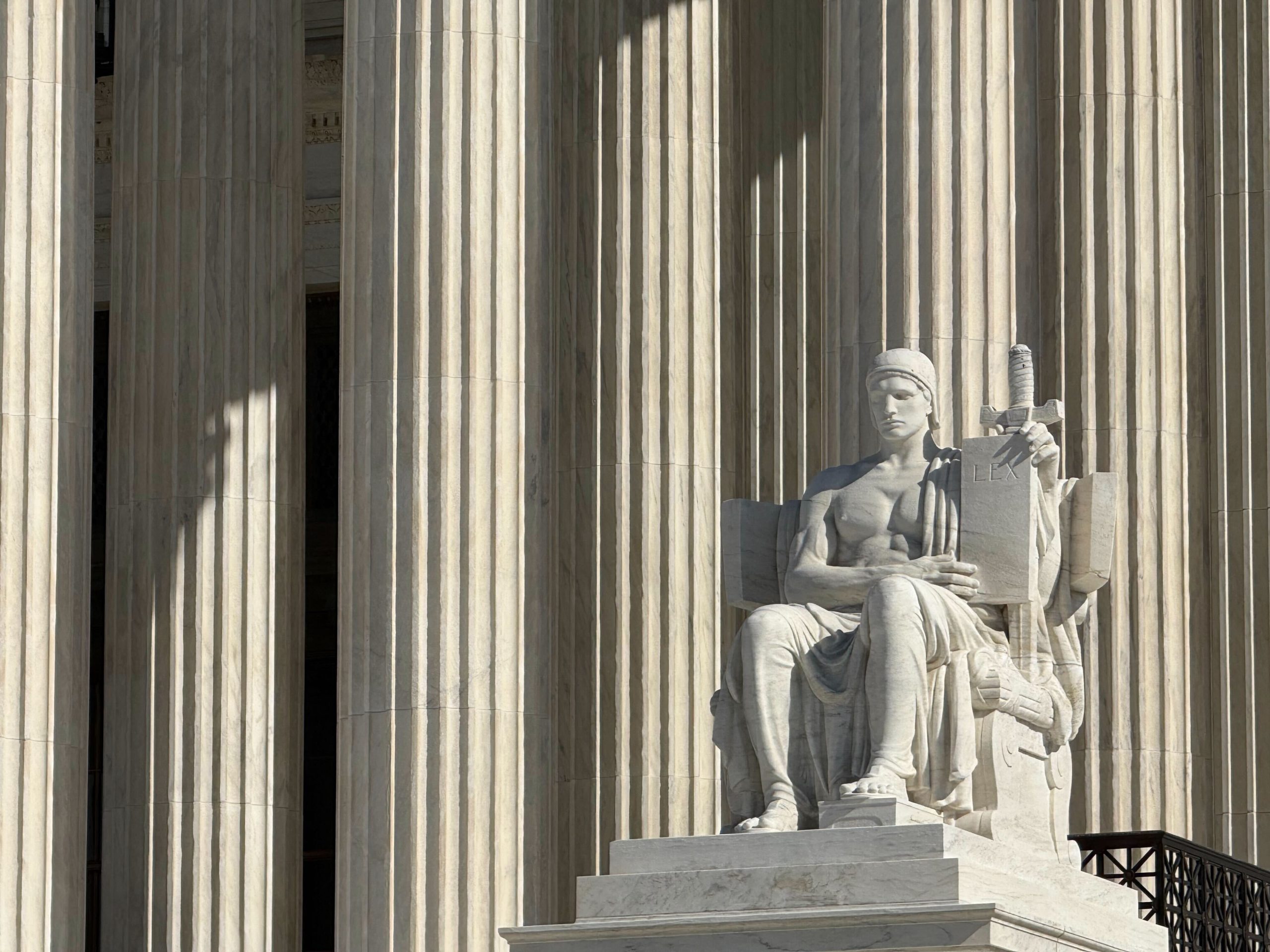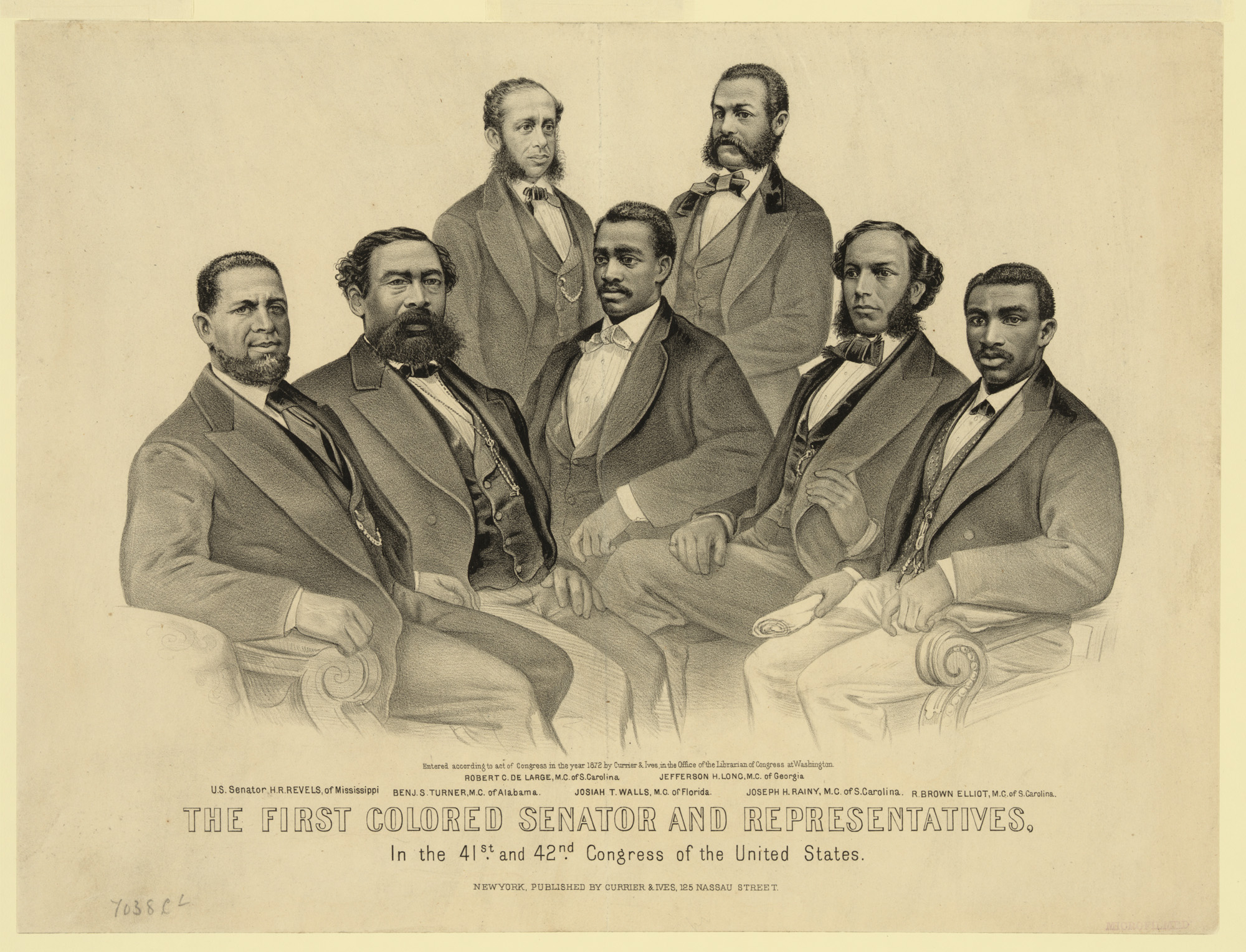Analysis of the U.S. Supreme Court’s 2024-25 Term: Criminal Law Implications and Alignment with Sustainable Development Goals
Introduction: Judicial Review and the Pursuit of Sustainable Development
An examination of the U.S. Supreme Court’s 2024-25 term reveals that 27 of the 67 merits decisions, representing 40% of the docket, were either “pure” criminal law cases or directly related to the criminal justice system. This significant caseload underscores the judiciary’s role in shaping policies that directly impact the achievement of the United Nations Sustainable Development Goals (SDGs). Many decisions, while appearing civil in nature, possess profound implications for SDG 16 (Peace, Justice and Strong Institutions), SDG 5 (Gender Equality), SDG 10 (Reduced Inequalities), and SDG 3 (Good Health and Well-being). This report analyzes these rulings through the lens of the SDGs, highlighting the often-unacknowledged connection between judicial decisions and the global agenda for sustainable development.
SDG 16: Peace, Justice and Strong Institutions
The core of the Court’s criminal-related docket relates to SDG 16, which aims to promote the rule of law, ensure equal access to justice, and build effective, accountable institutions. The distinction between “pure” and “related” criminal cases illustrates the broad reach of the justice system.
- Access to Justice (Target 16.3): Cases concerning post-conviction relief and evidence are central to ensuring justice for all. In Gutierrez v. Saenz, the Court addressed access to DNA testing in a capital case, a fundamental issue for preventing wrongful convictions and ensuring fair trials. Similarly, Rivers v. Guerrero, a case involving a “successive” habeas corpus petition, directly impacts an inmate’s ability to challenge their conviction, highlighting the procedural barriers that can impede access to justice.
- Accountable Institutions (Target 16.6): The functioning of the legal system itself was under review. Decisions on immigration law, such as Trump v. J.G.G. and A.A.R.P. v. Trump, scrutinize the due process provided by government agencies, reinforcing the need for transparent and accountable institutional practices.
- Combating Illicit Financial Flows (Target 16.4): Cases addressing fraud and racketeering contribute to institutional integrity. Medical Marijuana, Inc. v. Horn, concerning federal racketeering laws, and the dismissed securities fraud case, NVIDIA Corp. v. E. Ohman J:or Fonder AB, touch upon the legal frameworks designed to ensure corporate accountability and combat illicit economic activities.
SDG 5 & SDG 3: Gender Equality, Health, and Well-being
Several rulings have direct consequences for health outcomes and gender equality, demonstrating the intersection of law with social development goals.
- Gender Equality (Target 5.1): The decision in United States v. Skrmetti, which upheld a state law prohibiting certain medical treatments for transgender youths, is profoundly linked to SDG 5. The ruling touches upon discrimination based on gender identity and has significant implications for the rights and equality of transgender individuals. The potential for future criminalization of medical providers, as seen in similar state statutes, further entwines this civil rights issue with the criminal justice system, potentially undermining efforts to end all forms of discrimination.
- Good Health and Well-being (SDG 3): The Skrmetti decision also directly impacts SDG 3 by regulating access to healthcare for a vulnerable population. Furthermore, the case of Medical Marijuana, Inc. v. Horn intersects with evolving public health policies and legal frameworks surrounding medical treatments and substances.
SDG 10: Reduced Inequalities
The Court’s docket frequently addressed issues of inequality, particularly concerning vulnerable and marginalized groups, aligning with the objectives of SDG 10.
- Migration and Due Process (Target 10.7): The five immigration-related decisions of the term, including Riley v. Bondi and Monsalvo Velazquez v. Bondi, are critical to SDG 10. These cases determine the procedural rights and protections afforded to non-citizens, directly impacting inequalities faced by migrant populations within the justice system. The criminal justice system’s deep entanglement with immigration law means that even minor offenses can lead to severe consequences, exacerbating vulnerabilities.
- Equal Access to Legal Systems: Cases like Gutierrez v. Saenz not only relate to SDG 16 but also highlight the inequalities faced by individuals within the justice system, particularly those on death row who may lack the resources to pursue exculpatory evidence.
Summary of “Related to Criminal Law” Decisions from the 2024-25 Term
The following 13 decisions illustrate the broad and often hidden impact of the Supreme Court’s work on criminal justice and its alignment with various Sustainable Development Goals.
- Free Speech Coalition v. Paxton (First Amendment): Upholding age-verification requirements for pornography, with potential future implications for criminal law concerning identity verification. (Relates to SDG 16)
- Gutierrez v. Saenz (Fifth Amendment): Addressing standing to challenge limitations on access to DNA evidence in a capital case. (Relates to SDG 16, SDG 10)
- Fuld v. Palestine Liberation Organization (Fifth Amendment): Upholding personal jurisdiction over the PLO in a case concerning terrorism, providing a forum for victims. (Relates to SDG 16)
- United States v. Skrmetti (14th Amendment): Rejecting an equal protection challenge to a statute prohibiting certain medical treatments for transgender youths. (Relates to SDG 5, SDG 3, SDG 10)
- Rivers v. Guerrero (Habeas Corpus): Defining what constitutes a “successive” petition for post-conviction relief. (Relates to SDG 16)
- Wisconsin Bell, Inc v. United States, ex rel. Heath (False Claims Act): Broadening the scope of federal claims to include funds where the government provided “any portion” of the money. (Relates to SDG 16)
- NVIDIA Corp. v. E. Ohman J:OR Fonder AB (Securities Fraud): Case dismissed, but highlights the intersection of civil securities fraud litigation with potential criminal liability. (Relates to SDG 8, SDG 16)
- Riley v. Bondi (Immigration): Ruling that a filing deadline is not jurisdictional. (Relates to SDG 10, SDG 16)
- A.A.R.P. v. Trump (Immigration): Addressing due process for removals under the Alien Enemies Act. (Relates to SDG 10, SDG 16)
- Monsalvo Velazquez v. Bondi (Immigration): Ruling that a voluntary departure deadline extends to the next business day. (Relates to SDG 10, SDG 16)
- Trump v. J.G.G. (Immigration): Addressing due process and habeas jurisdiction for removals under the Alien Enemies Act. (Relates to SDG 10, SDG 16)
- Bouarfa v. Mayorkas (Immigration): Concerning visa revocation based on a sham marriage. (Relates to SDG 10, SDG 16)
- Medical Marijuana, Inc. v. Horn (Civil RICO): Allowing a plaintiff to sue for business loss caused by personal injury, relevant to jurisdictions where marijuana remains unlawful. (Relates to SDG 3, SDG 16)
Analysis of the Article in Relation to Sustainable Development Goals (SDGs)
1. Which SDGs are addressed or connected to the issues highlighted in the article?
The article discusses several legal cases and their implications, which connect to multiple Sustainable Development Goals (SDGs). The primary SDGs addressed are:
- SDG 16: Peace, Justice and Strong Institutions: This is the most prominent SDG in the article. The entire text revolves around the functioning of the Supreme Court, the interpretation of law, access to justice, and the rule of law. Cases concerning habeas corpus, due process for immigrants, and access to DNA evidence in capital cases directly relate to building effective, accountable, and inclusive institutions at all levels.
- SDG 5: Gender Equality: The article’s detailed analysis of United States v. Skrmetti, which upheld a law prohibiting certain medical treatments for transgender youths, connects directly to this goal. The discussion highlights potential discrimination and the criminalization of healthcare, which are barriers to gender equality and the well-being of transgender individuals. The reference to the Dobbs decision and the subsequent criminal penalties for abortion providers also falls under this SDG, as it pertains to women’s health and bodily autonomy.
- SDG 10: Reduced Inequalities: This goal is relevant as many of the cases discussed involve vulnerable or marginalized groups. The immigration cases address inequalities based on national origin and legal status. The Skrmetti case deals with the rights and equal protection of transgender youth, a marginalized community. Cases like Gutierrez v. Saenz, involving an inmate in a capital case seeking DNA testing, touch upon inequalities within the justice system, particularly for those incarcerated.
- SDG 3: Good Health and Well-being: The article connects to this goal through its discussion of cases that impact access to healthcare. The Skrmetti decision directly affects the provision of medical treatments for transgender youths. The author’s concern about the “chilling criminal consequences” for physicians providing such care highlights a significant barrier to health services. The mention of the Medical Marijuana, Inc. v. Horn case also touches upon a health-related topic.
2. What specific targets under those SDGs can be identified based on the article’s content?
Based on the issues discussed, the following specific SDG targets can be identified:
- Target 16.3: Promote the rule of law at the national and international levels and ensure equal access to justice for all.
- Explanation: This target is central to the article. The discussion of federal habeas corpus decisions, such as in Rivers v. Guerrero, where an inmate’s constitutional claims are at stake, directly relates to access to justice. Similarly, Gutierrez v. Saenz, which involves a capital inmate’s “15-year confrontation with a Texas district attorney who refuses to permit DNA testing,” exemplifies the struggle for equal access to justice and legal remedies. The five immigration cases mentioned, particularly those dealing with due process for removals (A.A.R.P. v. Trump and Trump v. J.G.G.), are fundamentally about applying the rule of law to non-citizens.
- Target 16.1: Significantly reduce all forms of violence and related death rates everywhere.
- Explanation: The case of Fuld v. Palestine Liberation Organization is directly linked to this target. The article notes that this case “challenges the application of a federal statute providing a federal forum for victims of criminal terrorism,” highlighting a legal mechanism for addressing violence and seeking justice for its victims.
- Target 5.1: End all forms of discrimination against all women and girls everywhere.
- Explanation: While the target specifically mentions women and girls, its principle of ending discrimination is applicable to the Skrmetti case. The article analyzes the Supreme Court’s decision to uphold a Tennessee law “prohibiting certain medical treatments for transgender youths,” which is framed as an equal protection challenge. The author points out the potential for criminalization, which represents a severe form of state-sanctioned discrimination against a specific group based on gender identity.
- Target 10.3: Ensure equal opportunity and reduce inequalities of outcome, including by eliminating discriminatory laws, policies and practices.
- Explanation: This target is addressed through the legal challenges to laws perceived as discriminatory. The challenge in United States v. Skrmetti was based on the 14th Amendment’s equal protection clause, aiming to eliminate a law that creates unequal outcomes for transgender youth. The Supreme Court’s decision to uphold the law is presented in the article as a development that could lead to further inequality and “chilling criminal consequences.”
- Target 3.8: Achieve universal health coverage, including… access to quality essential health-care services.
- Explanation: The article’s focus on the Skrmetti case highlights a direct threat to accessing essential healthcare services for a specific population. The prohibition of medical treatments and the potential for criminal penalties against doctors, as the article notes is the case in an “almost identical Oklahoma statute,” create significant barriers to healthcare, running counter to the goal of universal access.
3. Are there any indicators mentioned or implied in the article that can be used to measure progress towards the identified targets?
The article, being a legal analysis rather than a statistical report, implies several qualitative and quantitative indicators that could be used to measure progress.
- Indicator for Target 16.3 (Access to Justice):
- Indicator: Legal and procedural frameworks governing post-conviction relief and access to evidence.
- Explanation: The article’s discussion of Rivers v. Guerrero (defining a “successive” habeas petition) and Gutierrez v. Saenz (access to DNA testing) implies that the rules, court decisions, and outcomes in such cases are key indicators of whether equal access to justice is being upheld for incarcerated individuals.
- Indicator for Targets 5.1 and 10.3 (Non-discrimination):
- Indicator: Number of laws enacted or upheld that restrict rights or services for specific groups, and the inclusion of criminal penalties in such laws.
- Explanation: The article explicitly provides this indicator by stating that “criminal penalties are available, in at least five states, for physicians providing transgender care.” It also points to an Oklahoma statute containing a “felony criminal provision.” This quantifies the extent of discriminatory legislation and its enforcement through the criminal justice system, serving as a direct measure of regression from the target.
- Indicator for Target 3.8 (Access to Healthcare):
- Indicator: Existence of laws that criminalize the provision of specific medical services.
- Explanation: The article clearly implies this indicator by discussing the potential for criminal penalties against doctors providing gender-affirming care following the Skrmetti decision and abortion services after the Dobbs decision. The author notes that after Dobbs, “criminal penalties have been available to use against abortion providers.” The existence and enforcement of such laws are direct indicators of barriers to accessing essential healthcare.
4. Table of SDGs, Targets, and Indicators
| SDGs | Targets | Indicators Identified in the Article |
|---|---|---|
| SDG 16: Peace, Justice and Strong Institutions | 16.3: Promote the rule of law… and ensure equal access to justice for all. | Court rulings on procedural rights for inmates (e.g., habeas corpus petitions in Rivers v. Guerrero) and access to evidence (e.g., DNA testing in Gutierrez v. Saenz). Application of due process in immigration removal cases (e.g., A.A.R.P. v. Trump). |
| SDG 16: Peace, Justice and Strong Institutions | 16.1: Significantly reduce all forms of violence and related death rates everywhere. | Availability of legal forums for victims of criminal terrorism to seek justice (as discussed in Fuld v. Palestine Liberation Organization). |
| SDG 5: Gender Equality | 5.1: End all forms of discrimination against all women and girls everywhere. | The legal status of laws prohibiting medical treatments for transgender individuals (as in the Skrmetti case). The existence of criminal penalties for providing healthcare services like abortion and gender-affirming care. |
| SDG 10: Reduced Inequalities | 10.3: Ensure equal opportunity and reduce inequalities of outcome, including by eliminating discriminatory laws… | The number of states with laws that can be enforced with criminal penalties against providers of transgender care (the article mentions “at least five states”). Court decisions on equal protection challenges to laws affecting marginalized groups (e.g., the Skrmetti decision). |
| SDG 3: Good Health and Well-being | 3.8: Achieve universal health coverage, including… access to quality essential health-care services. | The existence of laws that criminalize medical providers for delivering specific types of care (e.g., the Oklahoma statute with a “felony criminal provision” for transgender care). |
Source: scotusblog.com







